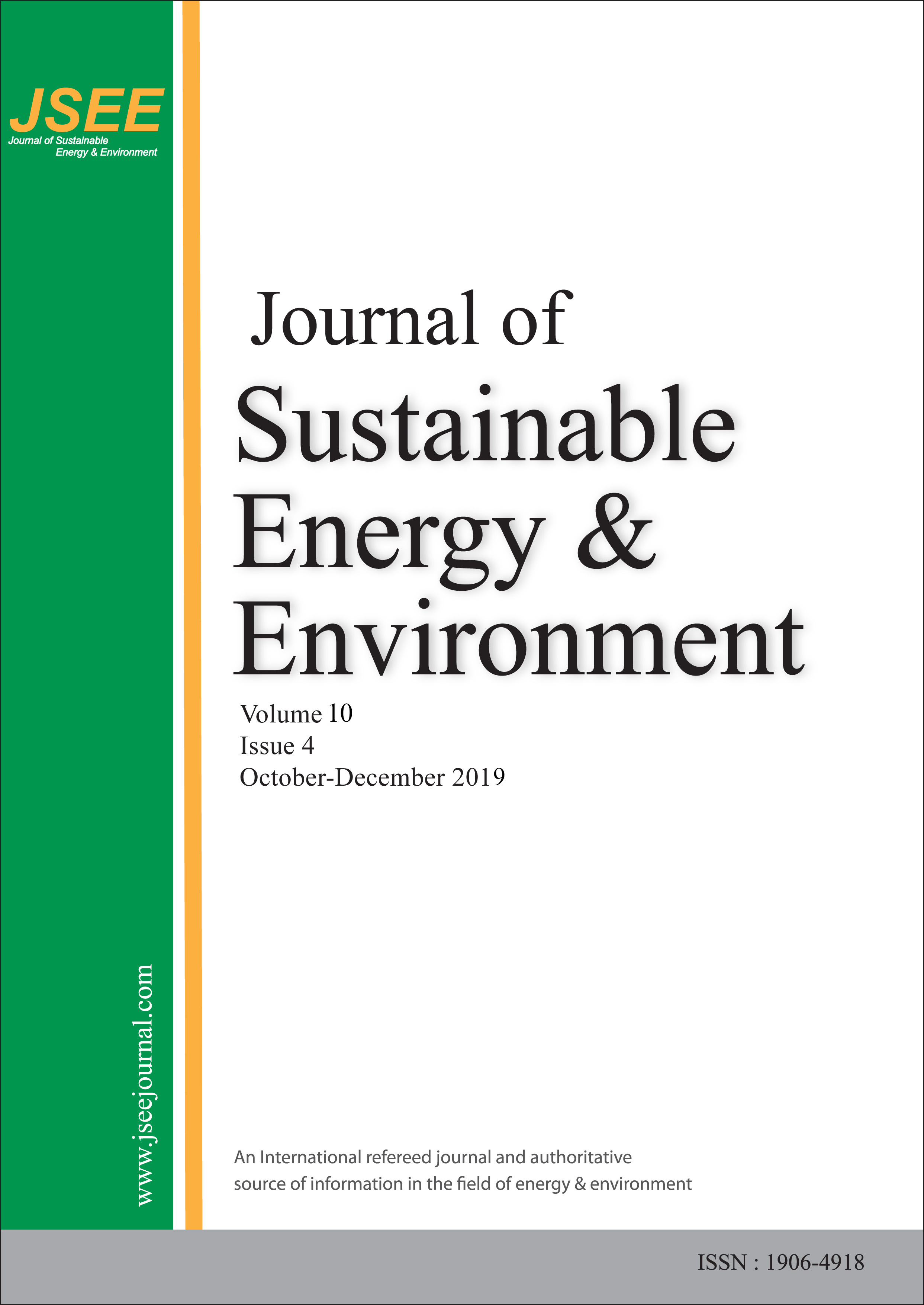
Thitima Sornpitak and Nakorn Worasuwannarak*
Abstract: Three washing techniques namely water at room temperature, hot water, and hydrochloric acid were applied to rice straw to remove the inorganic matters. The ash content and elemental composition of washed rice straw were examined in detail. Then, the pyrolysis behaviors and gas formation rate during the pyrolysis of washed biomass were examined using TGA and TG-MS techniques. It was found that water could easily remove alkali metal and Cl, but water could not remove alkaline earth metals. On the other hand, hydrochloric acid could significantly remove alkali and alkaline earth metals. However, silicon cannot be removed by washing because of the strong bonding between amorphous silica and biomass matrix. Washing significantly affected the pyrolysis behavior of biomass. The weight change curves during the pyrolysis of washed biomass increased by approximately 20&C in temperature. It was found that the amount of tar produced during the pyrolysis increased significantly, whereas the amount of H2O decreased significantly by washing. From these measurements, the effect of inorganic matters on the pyrolysis behavior of biomass was examined in detail. Keywords: Rice straw, washing, pyrolysis behavior, gas formation rate.

Promporn Keeratiisariyakul, Patrick Rousset* and Adisak Pattiya
Abstract: Leucaena (Leucaena leucocepphala) and oil palm empty fruit bunch, EFB (Elaeis guineesis) were selected as a woody and non-woody biomass samples, respectively in order to produce torrefied biomass pellets. In this study, torrefaction was performed at 300&C, three minute-residence time before pelletization. Then, the pellets have been characterized energetically and physically including volumetric energy density, and hygroscopic behavior. The results showed the torrefaction insignificantly enhanced high heating value of Leucaena from 19.3 MJ/kg to 19.5 MJ/kg and 18.3 MJ/kg to 19.1 MJ/kg for EFB. Moreover, torrefaction also improved the water resistance ability. While, the densification enhanced bulk density of biomass from 500 kg/m3 to 527 kg/m3 and 553 kg/m3 to 574 kg/m3 for Leucaena and EFB, respectively. The volumetric energy density was logically increased for both Leucaena and EFB biomass. Keywords: Torrefaction, Densification, Biomass, Pellets.

Nway Ei Aung, Sebastien Bonnet* and Savitri Garivait
Abstract: Fire is an important disturbance factor in terrestrial ecosystems of the world including Southeast Asia (SEA). Fires contribute emissions of carbon and other trace gases impacting air quality and human health. In this study, the temporal variations in vegetation fires based on burned areas and related carbon emissions in SEA were studied with a particular focus on Myanmar based on data retrieved from the Global Fire Emission Database (GFED) over the period 2000-2015. The potential influence of climatic conditions on vegetation fires, in particular El Nino and La Nina years were also investigated. It was found that burned areas and carbon emissions relate to crop land, savanna, peat and forest, and vary significantly among SEA countries. The fire season spreads mostly from January to May each year with a peak usually observed in March and April. The largest emissions of carbon in SEA are from Indonesia due to its extensive peat land cover and burning, particularly during El Nino years. However, excluding peat land related carbon emissions, Myanmar was found to be the largest contributor to carbon emissions mostly from forest and savanna fires. In Myanmar, although some correlation was observed between normal precipitation and monthly variations in BAs, there was no evidence of a strong correlation between yearly variations in burned areas and climate conditions related to El Nino and La Nina years. Although further investigations should be performed in regard of the above investigations, these initial results may highlight the potential influence of anthropogenic activities on vegetation fires.Keywords: Global Fire Emission Database, burned areas, carbon emissions, Oceanic Ni&o Index, Southeast Asia.

Nang Phyu Phwe and Amnat Chidthaisong*
Abstract:A laboratory experiment using column leaching test was conducted to investigate the effects of different types, application rates and sizes of biochar on water retention, nutrient retention, pH and CEC in clay and sandy loam soils. Two types of biochar (mangrove and rubber), two application rates (20 and 40 ton ha-1), and two sizes (1 mm and 5 mm) were used. The results indicated that application of both types of biochar significantly increased water, NH4+ and NO3- retention capacity in both soils. The significant increase in water retention was observed only with the application rate of 40 ton ha-1, by 5-6% with mangrove biochar, and 11-15% with rubber biochar. Leaching of NH4+ was reduced by 45-49% with rubber biochar at 40 ton ha-1 in clay soil, and by 10-12% in sandy loam soil. On the other hand, at the same application rate, NO3- leaching was reduced by 40-50% with mangrove biochar and by 34-39% with rubber biochar in clay soil. Effects of biochar application on pH was observed only in sandy loam soil with an increase of 1.32 to 1.65 unit with rubber biochar, and 0.95 to 1.05 with mangrove biochar. Overall, it was found that sandy loam soil responded more significantly to biochar application than clay soil, and rubber biochar showed larger effects to soil when compared to mangrove biochar. The effect of size of biochar was not clearly observed. Keywords: Type of biochar, Sandy loam soil, Clay soil, Water retention, NH4+ retention, NO3- retention.